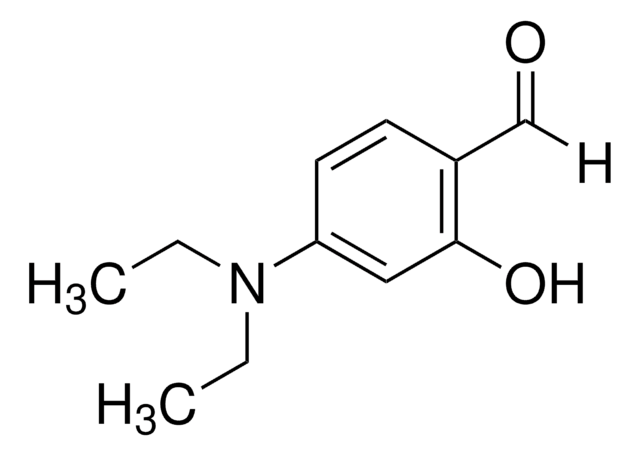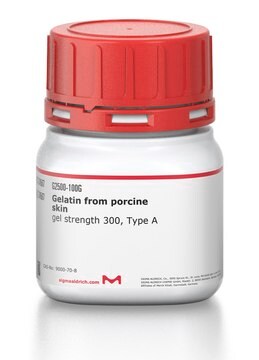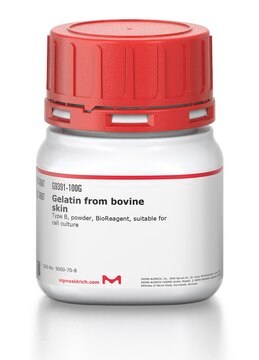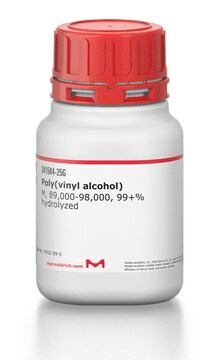Kluczowe dokumenty
440744
Polycaprolactone
average Mn 80,000
Synonim(y):
2-Oxepanone homopolymer, 6-Caprolactone polymer
About This Item
Polecane produkty
Formularz
pellets (~3 mm)
Poziom jakości
masa cząsteczkowa
average Mn 80,000
charakterystyka ekologicznej alternatywy
Design for Energy Efficiency
Use of Renewable Feedstocks
Learn more about the Principles of Green Chemistry.
sustainability
Greener Alternative Product
zanieczyszczenia
<0.5% water
mp
60 °C (lit.)
gęstość
1.145 g/mL at 25 °C
Mw/Mn
<2
Zastosowanie
3D bioprinting
advanced drug delivery
kategoria ekologicznej alternatywy
ciąg SMILES
C1CCC(=O)OCC1 (Canonical-SMILES)
InChI
1S/C6H10O2/c7-6-4-2-1-3-5-8-6/h1-5H2
Klucz InChI
PAPBSGBWRJIAAV-UHFFFAOYSA-N
Szukasz podobnych produktów? Odwiedź Przewodnik dotyczący porównywania produktów
Opis ogólny
- It degrades slower than other biodegradable polyesters in physiological condition, this property can be exploited in the controlled release of drugs in target tissues over a period of time.
- Its poor surface wetting and interaction with biological fluids on account of its hydrophobicity leads to poor cell adhesion and proliferation, hence it is blended with other synthetic /natural polymers.
Zastosowanie
- PCL loaded with antibiotics may be used to treat infections of the respiratory tract, like tuberculosis.
- Investigations were carried out based upon phenotypic responses of human bone marrow mesenchymal cells (hBMSCs) for different ratio of chitosan/ polycaprolactone (PCL) blends.
- PCL/biomedical ceramic materials have been studied for possible osteo tissue regeneration.
- Action of PCL/graded insulin/beta-5 glycerophosphate concentrations on osteochondral tissue formation through adipose-derived stromal cell differentiation.
- Other general uses include:extrusion aid, die lubricant, mold release, pigment and filler dispersion aid and polyester segments in urethanes and block polyesters.
Cechy i korzyści
Non-toxic, biodegradable in soil, broad miscibility, mechanical compatibility with many polymers and good adhesion to a broad spectrum of substrates.
produkt powiązany
Kod klasy składowania
11 - Combustible Solids
Klasa zagrożenia wodnego (WGK)
WGK 3
Temperatura zapłonu (°F)
Not applicable
Temperatura zapłonu (°C)
Not applicable
Środki ochrony indywidualnej
Eyeshields, Gloves, type N95 (US)
Wybierz jedną z najnowszych wersji:
Masz już ten produkt?
Dokumenty związane z niedawno zakupionymi produktami zostały zamieszczone w Bibliotece dokumentów.
Klienci oglądali również te produkty
Produkty
Odkryj najnowsze osiągnięcia w dziedzinie biopolimerów i ich zastosowań jako kompozytów w celu zmniejszenia ilości odpadów elektronicznych i zwiększenia żywotności. Ten mini-przegląd zapewnia wgląd w ich właściwości i syntezę, a także przewodzące polimery pochodzenia biologicznego do zastosowań w bioelektronice, czujnikach i superkondensatorach.
We will explore the technological advances that have contributed toward the progress of 3DP of tissue engineering scaffolds, current materials used to create 3DP scaffolds, and the challenges that remain.
W ciągu ostatnich dwóch dekad inżynieria tkankowa i medycyna regeneracyjna stały się ważnymi dziedzinami interdyscyplinarnymi, które obejmują biologię, chemię, inżynierię i medycynę.
In the past two decades, tissue engineering and regenerative medicine have become important interdisciplinary fields that span biology, chemistry, engineering, and medicine.
Global Trade Item Number
| SKU | GTIN |
|---|---|
| 440744-500G | 4061835563074 |
| 440744-250G | 4061835563067 |
| 440744-5G | 4061832253398 |
Nasz zespół naukowców ma doświadczenie we wszystkich obszarach badań, w tym w naukach przyrodniczych, materiałoznawstwie, syntezie chemicznej, chromatografii, analityce i wielu innych dziedzinach.
Skontaktuj się z zespołem ds. pomocy technicznej

![2,3,6,7-Tetrahydro-8-hydroxy-1H,5H-benzo[ij]quinolizine-9-carboxaldehyde 98%](/deepweb/assets/sigmaaldrich/product/structures/166/830/a0d9a84a-5623-41a1-a54b-3b0272e5b28c/640/a0d9a84a-5623-41a1-a54b-3b0272e5b28c.png)






